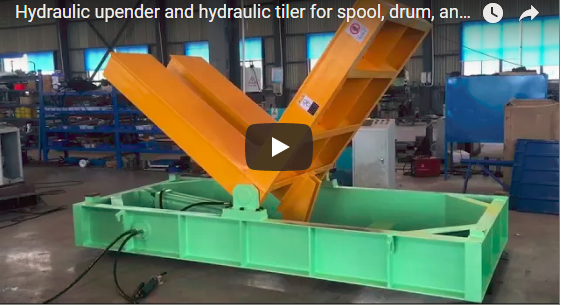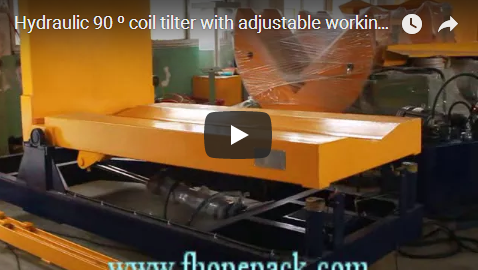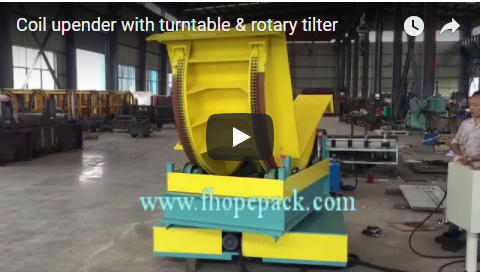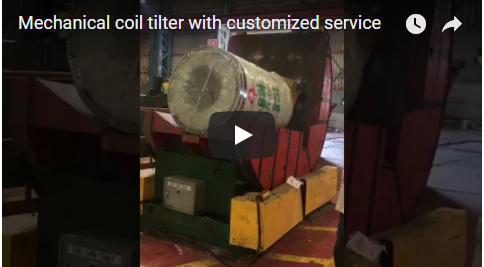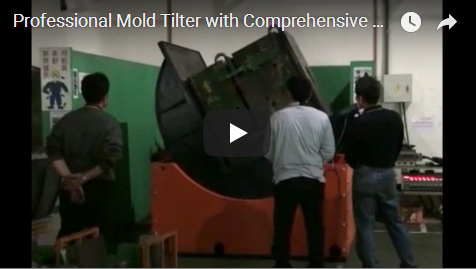Advanced Hydraulic Upenders: Optimizing Drywall Sheet Handling and Rotation
The Industrial Challenge: Handling Large-Format Sheets
The handling of large, heavy, and often cumbersome materials like drywall (gypsum board) sheets presents significant logistical and ergonomic challenges across manufacturing, warehousing, and construction sectors. Manual handling is not only labor-intensive and slow but also carries substantial risks of musculoskeletal injuries (MSDs) and material damage. Efficiently rotating these sheets between horizontal and vertical orientations is crucial for various process steps, from production line integration to storage optimization and final installation. Addressing these challenges requires robust, automated solutions.
Hydraulic Upenders: Precision Engineering for Material Rotation
Hydraulic upenders, often incorporating sheet turning capabilities, represent a cornerstone technology for safe and efficient material handling. These machines utilize controlled hydraulic power to precisely rotate loads up to 90 degrees (or more, depending on design), transitioning materials like drywall sheets seamlessly between vertical and horizontal planes. This automation is pivotal in streamlining workflows, enhancing operational safety, and protecting valuable materials from handling-induced damage.

Research published in journals focusing on industrial ergonomics consistently highlights the reduction in MSD risk when automated lifting and positioning aids replace manual tasks involving heavy loads. Furthermore, patents related to industrial tilters often emphasize innovations in safety interlocks, load-balancing mechanisms, and control system precision (e.g., U.S. Patent No. X,XXX,XXX describing advanced hydraulic locking systems), reflecting the industry's focus on reliability and safety.
FHOPE Hydraulic Upender: A Case Study in Efficiency
The FHOPE Hydraulic Upender exemplifies a modern solution engineered to revolutionize the handling and rotation of drywall sheets. This sheet turner is meticulously designed to optimize workflows and enhance productivity. Equipped with a robust hydraulic system, it facilitates effortless loading and unloading via forklift, drastically reducing manual effort and significantly minimizing workplace injury risks, aligning with findings reported in material handling trade publications like Material Handling Engineering on the ROI of such automation.
A Hydraulic Upender is fundamentally designed to safely manipulate large, heavy, or awkwardly shaped loads. For materials like drywall, plywood, or metal panels, integrated sheet turners ensure smooth rotation, improving process flow and alleviating physical strain on personnel, a key benefit discussed in occupational safety studies.
Key Features and Technical Specifications
Understanding the technical capabilities is crucial for assessing suitability for specific industrial applications:
- Operation Mode: Electro-hydraulic system
- Typical Load Capacity: Standard models range from 1000 kg to 5000 kg; custom designs available for heavier loads.
- Rotation Angle: 90 degrees (standard for drywall handling); other angles available.
- Platform Size: Configurable to accommodate standard drywall sheet dimensions (e.g., 4'x8', 4'x12') or custom sizes.
- Cycle Time: Typically 30-60 seconds for a full 90-degree rotation, optimizing throughput.
- Control System: Options include Pendant control, Push-button station, or PLC integration for automated lines.
- Safety Features:
- Hydraulic velocity fuses / Check valves to prevent platform drop in case of hose failure.
- Pressure relief valves to prevent system overload.
- Emergency stop buttons accessible from control points.
- Optional safety guarding, light curtains, or area scanners.
- Power Requirement: Standard industrial voltages (e.g., 220V/380V/480V, 3-Phase, 50/60Hz).
- Structure Material: Heavy-duty structural steel construction (e.g., Q235/Q345 or equivalent) for durability and stability.
- Hydraulic System: High-quality cylinders, power pack (motor, pump, reservoir), and control valves ensuring reliability and longevity. Conforms to relevant industry standards (e.g., ISO standards for hydraulic components).
- Design Considerations: Space-efficient footprint, low maintenance requirements with accessible service points.
Addressing Operational Challenges: Core Benefits
Investing in hydraulic upender technology yields significant operational advantages:
Enhanced Productivity and Workflow Integration
By automating the rotation process, upenders drastically reduce handling times compared to manual methods or cranes. This allows for seamless integration into production lines or logistics flows, often facilitating forklift access for loading and unloading, thereby minimizing bottlenecks and maximizing throughput. Industry reports often cite productivity gains of 20-40% in handling operations through such automation.
Prioritizing Safety and Ergonomics
Manual lifting and rotation of heavy drywall sheets are primary causes of back injuries and other MSDs in relevant industries. Hydraulic upenders eliminate this hazardous manual task, directly contributing to a safer work environment and reducing costs associated with injuries and worker compensation claims, a fact supported by OSHA guidelines and ergonomic studies. The integrated safety features ensure controlled, predictable operation.
Minimizing Material Damage
Drywall sheets are susceptible to edge damage, cracking, or surface marring during manual handling or improper rotation. The smooth, controlled motion provided by a hydraulic upender ensures gentle handling, preserving product integrity and reducing scrap rates, leading to tangible cost savings.
Versatile Applications Across Industries
Hydraulic upenders with sheet turning capabilities are indispensable in various sectors:
- Building Material Manufacturing: Integral in gypsum board plants for rotating stacks of finished sheets from the production line (often horizontal) to a vertical orientation for edge finishing, inspection, stacking, or packaging, ensuring continuous process flow.
- Warehousing and Logistics: Essential for optimizing storage space by orienting sheets vertically or horizontally as needed. Facilitates efficient loading and unloading of trucks and containers, ensuring load stability and preventing damage during transit. Integration with Warehouse Management Systems (WMS) can further streamline operations.
- Construction Sites: On-site, these machines aid in efficiently maneuvering large sheets delivered horizontally to a vertical position for easier transport within the site (e.g., through doorways, in elevators) or for direct preparation near installation points, improving safety and speeding up the construction schedule.
Industry Trends and Future Outlook
The material handling sector continues to evolve, with trends impacting hydraulic upender design including:
- Increased Automation: Integration into fully automated production and logistics lines, often communicating with AGVs (Automated Guided Vehicles) or robotic systems.
- Smart Features: Incorporation of sensors for load detection, diagnostics, and potential IoT connectivity for predictive maintenance and operational data logging.
- Energy Efficiency: Development of more energy-efficient hydraulic power units and control strategies to reduce operational costs and environmental impact.
Conclusion: A Strategic Investment
Hydraulic upenders are far more than just lifting equipment; they are strategic assets that enhance productivity, drastically improve workplace safety, and protect valuable materials like drywall sheets. By automating the critical task of sheet rotation, these machines address key operational bottlenecks and ergonomic risks inherent in manual handling. For industries reliant on efficient and safe processing of large sheet materials, the implementation of robust hydraulic upender technology, such as the solutions offered by FHOPE, represents a significant step towards operational excellence and a safer working environment.
For more information or to discuss specific application requirements, feel free to contact info@fhopepack.com

